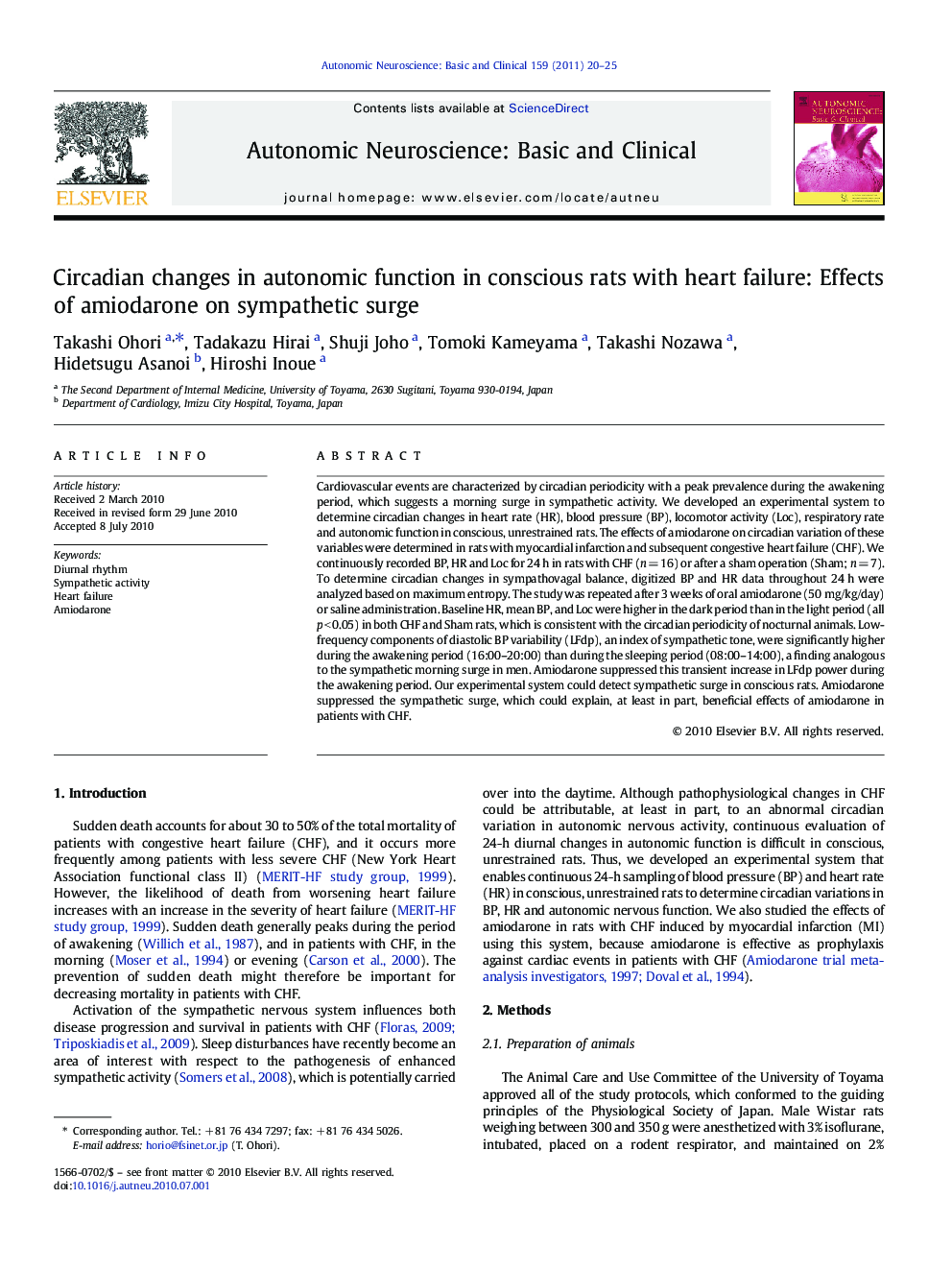| Article ID | Journal | Published Year | Pages | File Type |
|---|---|---|---|---|
| 3035022 | Autonomic Neuroscience | 2011 | 6 Pages |
Cardiovascular events are characterized by circadian periodicity with a peak prevalence during the awakening period, which suggests a morning surge in sympathetic activity. We developed an experimental system to determine circadian changes in heart rate (HR), blood pressure (BP), locomotor activity (Loc), respiratory rate and autonomic function in conscious, unrestrained rats. The effects of amiodarone on circadian variation of these variables were determined in rats with myocardial infarction and subsequent congestive heart failure (CHF). We continuously recorded BP, HR and Loc for 24 h in rats with CHF (n = 16) or after a sham operation (Sham; n = 7). To determine circadian changes in sympathovagal balance, digitized BP and HR data throughout 24 h were analyzed based on maximum entropy. The study was repeated after 3 weeks of oral amiodarone (50 mg/kg/day) or saline administration. Baseline HR, mean BP, and Loc were higher in the dark period than in the light period (all p < 0.05) in both CHF and Sham rats, which is consistent with the circadian periodicity of nocturnal animals. Low-frequency components of diastolic BP variability (LFdp), an index of sympathetic tone, were significantly higher during the awakening period (16:00–20:00) than during the sleeping period (08:00–14:00), a finding analogous to the sympathetic morning surge in men. Amiodarone suppressed this transient increase in LFdp power during the awakening period. Our experimental system could detect sympathetic surge in conscious rats. Amiodarone suppressed the sympathetic surge, which could explain, at least in part, beneficial effects of amiodarone in patients with CHF.
